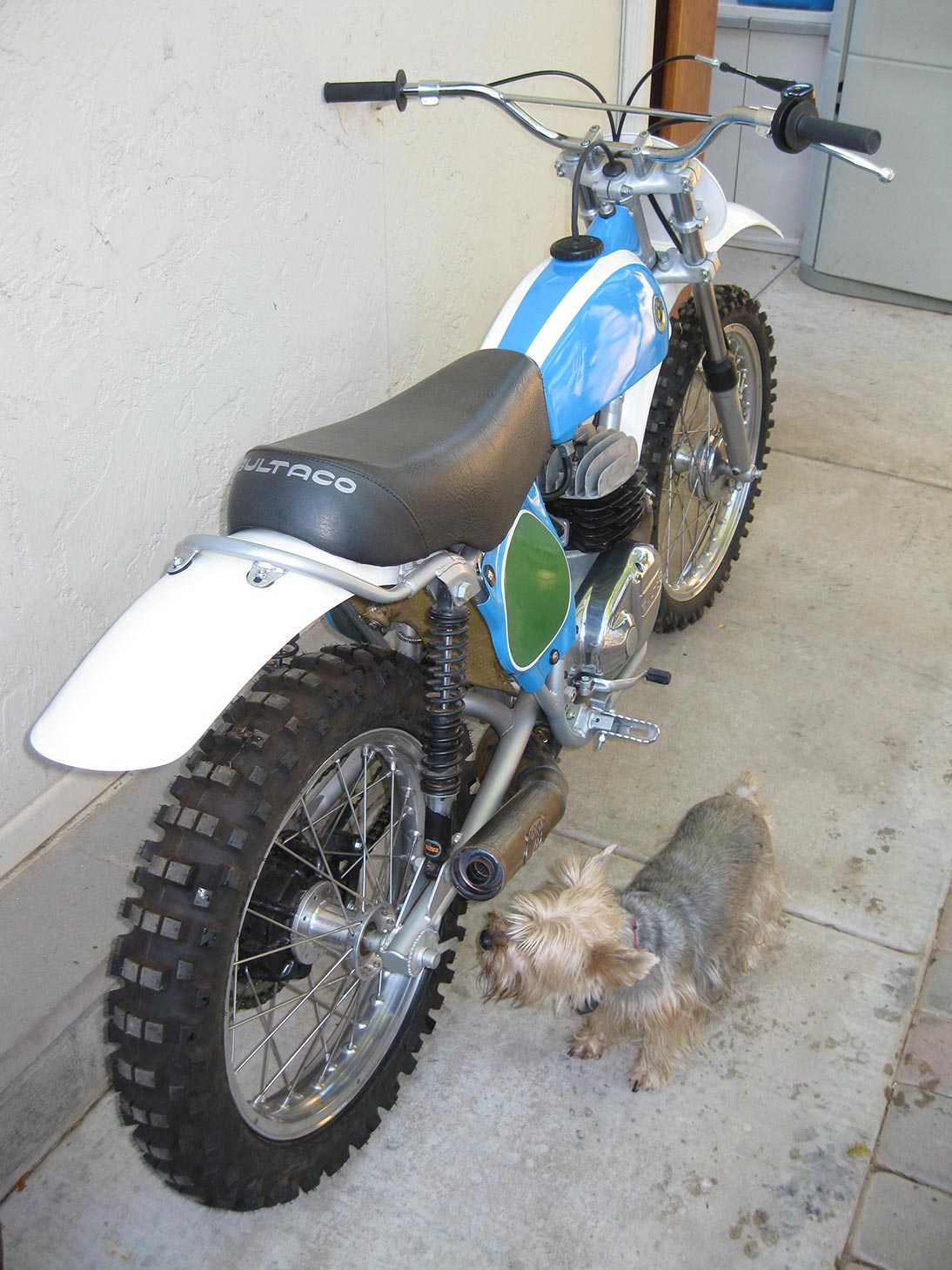
Front forks are original and have been completely rebuilt and polished, they have been lowered for flat track racing.ġ974 Bultaco 1974 Pursang MK-7 Model 120Jim Pomeroy Edition (1st American to win a Grand Prix motocross race) I bought it from a grandma, the original owner Barbara (Bab's) who raced it in the Utah desert a couple of years.As a barn find, it had been sitting in their shop since the late 70's.Although it showed little use-it had a skid plate installed so the frame was perfect. Super wide billet triple clamps with extra wide lipped wheels with Buchanan stainless spokes.

Frame has been powder coated twice, once silver, then again with clear. Dual plug cylinder head running one spark plug and other hole has compression release for racing. Piston skirt has been cut on the exhaust side for performance. This bike is fast and is ready to race! The cylinder and piston are still at original size bore. Bike is built for racing but has not been raced yet and has only been ridden four or five times with maybe two or three hours on it at the most. Mikuni carb, all new cables, bars, seat, seat pan, and rear fender. The entire motor and drive train are completely rebuilt. The motor out of a model 86 MKV, #M-8600598 is a more powerful engine.


Although when compared to today’s vertical whips Pomeroy’s cross-up may seem tame, in its time it was considered aerial poetry and daring.The machine pictured here was beautifully restored by Kelly Owen-a former racer and now a passionate collector of vintage motocross iron-and is an immaculate example of the way the Bultaco “Pomeroy” rolled off the showroom floor in 1974.To see more glorious motocross machines from the glory years, visit finished 2 stroke Flat Tracker! 1970 MKIV model 68, frame # B-6801043. Whether or not it really worked was never substantiated-other than the fact that Bultacos had enormous pull and low-end torque.Pomeroy immortalized himself and Bultaco in one of motocross’ most famous early photos, which captured him executing one of his picture-perfect cross-ups.The photo became a popular tee-shirt design and was used for numerous advertisements and to promote races. The theory was that on the power stroke, the piston rod was pushing more straight down on the crank-as opposed to being at an angle.The concept was a basic aspect of physics more inertia was transferred to the crank. In 1974 Bultacos were right foot shift, making the change to left side in 1975.Bultacos employed an interesting design element in their engines that significantly influenced the nature of the machine’s power delivery.The cylinders were offset, positioned slightly forward above the crank. Bul riders learned to keep pressure on the shifter to ensure the next gear was engaged before getting back into the throttle.Thankfully Bultacos had great torque that allowed the rider to rely on brute power to get them out of corners a gear high, thus requiring less shifting. Primary chain wear had to be watched if you didn’t want to throw one and send it through the costly case.The Bultacos had 5-speed transmissions with a huge amount of gearshift throw. Despite the limitations of suspension travel they managed to be relatively stable (for the period).Somewhat temperamental, Bultacos could tax their owners with headaches and DNFs if they didn’t stay vigilant on basic maintenance.

In corners, their ability to either pivot in soft or hard soil, or to rail berms with equal aplomb, made them extremely accommodating for a range of riding styles. They had shapely, extremely thin fiberglass gas tanks-so thin that the head fins stuck out on either side.Bultacos (or “Buls” as they were affectionately known) had superb handling. Bultaco rewarded Pomeroy’s continued loyalty to the Spanish brand (despite a flood of offers from other manufacturers) by naming their 1974 Pursang after him.Bultacos had a beauty all their own. It was the Spanish GP, and to cap off the moto win, Pomeroy famously wheelied across the finish line and flashed the peace sign.The crowd went nuts. In 1973 Bultaco rider Jim Pomeroy shocked the racing world when he became the first American to win a Motocross Grand Prix.


 0 kommentar(er)
0 kommentar(er)
